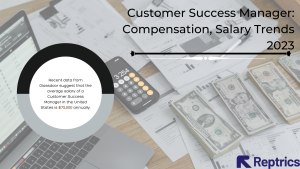Customer health scores are an essential tool for any business that wants to optimize the customer experience and improve retention rates. By measuring key performance indicators (KPIs) such as customer engagement, product usage, and customer satisfaction, businesses can identify at-risk customers, track changes over time, and proactively address customer needs. However, interpreting customer health scores can be a complex and nuanced process that requires both data analysis skills and a deep understanding of customer behavior. In this article, we’ll explore how customer success teams can go beyond the numbers and interpret customer health scores to drive real business value.
Basics of Customer Health Scores
Before we dive into the nuances of interpreting customer health scores, let’s review some of the basics. A customer health score is a metric that assesses the overall health of a customer relationship. Typically, a health score is calculated using a combination of data points, such as product usage, customer satisfaction, and customer engagement. The specific formula for calculating a customer health score will vary depending on the business and the industry, but the goal is always the same: to identify at-risk customers and take proactive steps to improve their experience.
For example, let’s say a SaaS company calculates its customer health score based on four KPIs: product usage, customer satisfaction, customer engagement, and support tickets. Each of these KPIs is assigned a weight based on its importance to the business. Product usage might be assigned a higher weight than customer engagement because it’s a stronger indicator of customer success. The business then collects data on each of these KPIs for each customer and calculates a health score. A customer with a high health score is considered healthy, while a customer with a low health score is considered at risk.
For a more detailed understanding of Customer Health Scores, download our guide.
Interpreting Customer Health Scores
While calculating a customer health score is important, the real value comes from interpreting the results and taking action based on those insights. Here are some key steps that customer success teams can take to interpret customer health scores effectively:
- Identify trends over time: One of the most important things that customer success teams can do is track changes in customer health scores over time. A customer who was healthy six months ago may now be at risk, due to a change in product usage or customer satisfaction. By tracking trends over time, customer success teams can identify at-risk customers before they churn and take proactive steps to retain them.
- Segment customers by health score: Another useful strategy is to segment customers by health score and focus on the highest-risk customers first. For example, a business might segment customers into three groups: high-risk, medium-risk, and low-risk. High-risk customers require the most attention and resources, while low-risk customers can be managed with more automation.
- Drill down into individual KPIs: While the overall health score is a useful metric, it’s also important to drill down into individual KPIs to identify specific areas for improvement. For example, if a customer’s health score is low due to low product usage, the customer success team can focus on improving the customer’s experience with the product and increasing usage.
- Combine qualitative and quantitative data: While customer health scores are based on quantitative data, it’s also important to consider qualitative data such as customer feedback and support interactions. A customer who has a low health score due to poor product usage may also have specific feedback on how the product can be improved, for example. By combining quantitative and qualitative data, customer success teams can get a more complete picture of the customer’s experience.
- Use predictive analytics: Finally, customer success teams can use predictive analytics to anticipate which customers are most likely to become at risk in the future. By analyzing historical data on customer behavior, the business can identify patterns that are predictive of future churn and take proactive steps.
You are making mistakes while creating health scores, learn what they are!
Different Ways B2B SaaS Health Scores Differ from Company to Company
- Metrics: Different companies may prioritize different metrics when calculating their health scores. For example, some companies may focus on usage metrics, while others may focus on customer sentiment.
HubSpot, a marketing and sales automation platform, tracks the health of its customers based on a combination of product usage, engagement, and support metrics.
- Weighting: Even if the same metrics are used, different companies may weigh them differently. For example, one company may place a greater emphasis on engagement metrics, while another may place more weight on customer support interactions.
Salesforce, a cloud-based customer relationship management (CRM) software company, places more weight on financial metrics such as account revenue, subscription renewals, and upsell opportunities when calculating their health scores.
Zendesk, a customer support, and ticketing software company, gives more weight to engagement metrics such as support ticket volume, response times, and customer satisfaction ratings when calculating their health scores.
- Scale: The scale used to calculate health scores can also differ from company to company. Some companies may use a 0-100 scale, while others may use a 0-10 scale.
Zoom, a video conferencing software company, uses a 0-10 scale for their health score, where a score of 8 or higher indicates a healthy account.
Asana, a project management and collaboration software company, uses a 0-100 scale for their health score, where a score of 90 or higher is considered healthy.
- Segmentation: Companies may also segment their customer base in different ways, which can impact how health scores are calculated. For example, one company may segment its customers based on company size, while another may segment based on industry.
Shopify, an e-commerce platform, segments its customer base by company size and calculates health scores separately for small, medium, and large accounts.
Qualtrics, an experience management software company, segments its customers by industry and calculates health scores separately for each industry vertical.
- Thresholds: Finally, companies may set different thresholds for what constitutes a healthy account. Some companies may consider a score of 80 to be healthy, while others may set their threshold at 90 or higher.
Slack, a messaging and collaboration software company, sets its threshold for a healthy account at a score of 80 or higher.
Monday.com, a work management and team collaboration software company, sets its threshold for a healthy account at a score of 75 or higher, but also has additional tiers of health scores to further segment its customer base.
Customer Success Sentiment in Calculating Health Scores
Customer success sentiment is an important factor in the calculation of customer health scores because it provides insights into how satisfied customers are with their overall experience using the product or service. Customer sentiment can be measured in various ways, such as through customer surveys, feedback forms, or online reviews.
Incorporating customer sentiment data into health scores allows B2B SaaS companies to better understand how their customers are feeling about their product or service, and can help identify potential issues or areas for improvement. For example, if a customer is expressing frustration with a particular feature or aspect of the product, this sentiment can be captured and included in the calculation of the health score. This can then alert the customer success team to reach out to the customer and address their concerns, potentially preventing churn or negative reviews.
Customer sentiment data can also help B2B SaaS companies identify potential advocates or promoters. If a customer is expressing a high level of satisfaction or enthusiasm for the product, this sentiment can be captured and included in the health score. This can then alert the customer success team to reach out to the customer and engage them further, potentially leading to positive word-of-mouth referrals and increased revenue.
Overall, incorporating customer sentiment data into health scores can help B2B SaaS companies more effectively monitor and manage their customer relationships, identify areas for improvement, and ultimately drive customer satisfaction and retention.









